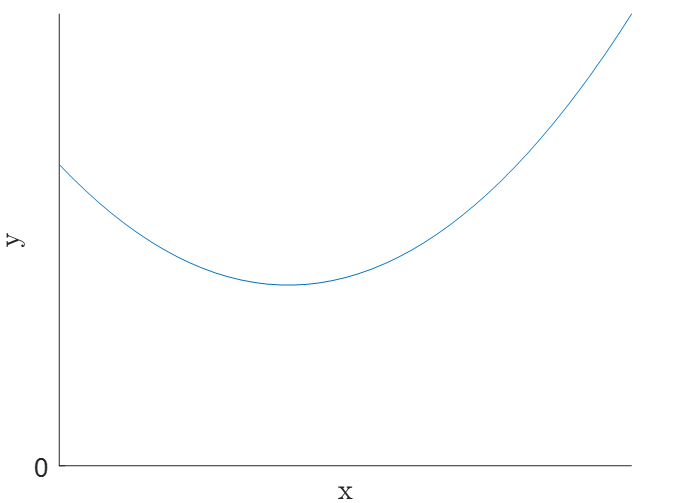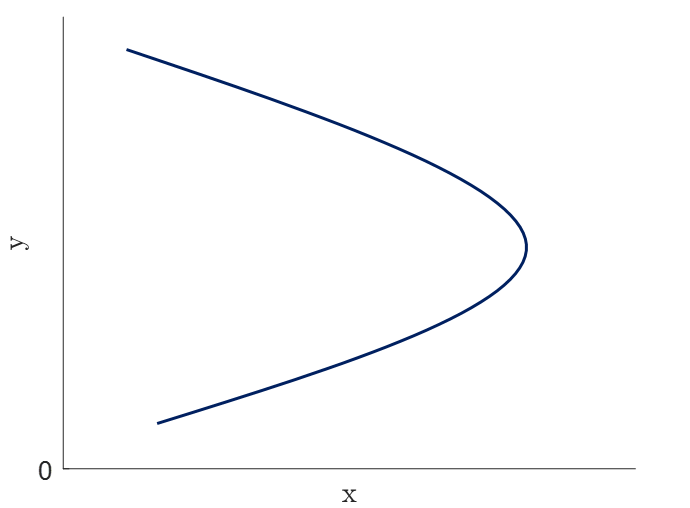Section 1: Practise questions
Question 1
Write a general form demand function. Give an example of a linear demand function.
A general form demand function, \(Q_d=f(P)\), tells that the quantity demanded of a good \((Q_d)\) depends on its market price \((P)\).
A specific form for a demand function, for example, \(Q_d=100-2P\), tells us exactly how the values of the dependent variable, \(Q_d\), are determined from the values of the independent variable, \(P\) . In this example, the specific functional form tells that a 1-unit increase in the price of the good, \(P\), will lead to a decrease in the quantity demanded of the good, \(Q_d\), by exactly \(2\) units.
Question 2
If a firm faces the total cost function, \(TC=100+2Q\), where \(Q\) is the quantity produced, what is the total cost when \(Q=10?\) \(Q=20?\)
When \(Q=10\), \(TC=100+2(10)=120\)
When \(Q=20\), \(TC=100+2(20)=140\)
Question 3
Which of the followings is a function and which one is not?


Figure 1(a) Figure 1(b)
Fig. 1(a) presents a function. Fig. 1(b) does not display the graph of a function as for some \(x\) in the domain, we get two values for \(y\).
Question 4
What is the domain of the function \(y=\sqrt{(x-10)}?\) Why?
The domain of the function \(y=\sqrt{(x-10)}\) is all \(x≥10\) as for any \(x<10\) the function takes the square root of a negative number which is an imaginary number.
Question 5
What is the domain of the total cost function \(C=f(x)\) where \(x\) is the quantity of production?
As production cannot be negative, domain is the set of all non-negative numbers.
Question 6
If the original function \(y=f(x)=10+2x\), find the inverse function \(x=g(y)\).
$$y = f(x) = 10 + 2x$$ $$y - 10 = 2x$$ $$x = 0.5y - 5$$ The inverse function is: \(x = g(y) = 0.5y - 5\)
Question 7
Given \(y=f(x)=x^2\), find the inverse function \(x=g(y)\).
The Inverse function does not exist. When we consider, \(y=f(x)=x^2\), for each value of \(x\), we get one and only one value for \(y\). Therefore, \(y=x^2\) is eligible to be a function. However, when we try to find its inverse function, we get \(x=\pm \sqrt{y}\). That means for each positive value of \(y\), we get two values for \(x\). Therefore, in this case, the inverse function does not exist.
Question 8
Given the demand function \(Q_d=10-2P\), find the inverse demand function.
$$Q = 10 - 2P$$ $$2P + Q = 10$$ $$2P = 10 - Q$$ $$P = 5 - 0.5Q$$

UWO Economics Math Resources by Mohammed Iftekher Hossain is licensed under a Creative Commons Attribution-NonCommercial-ShareAlike 4.0 International License.